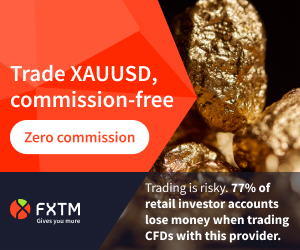Trading risk management is vital to becoming a successful trader and making money online. Learn the risks of poor risk management and discover how you could make a fortune by using basic tactics for managing forex risks.
Forex trading involves risks and every time you initiate a trade there are two potential scenarios. It can move in your direction or against you. This is a challenge faced by traders of all levels. Recently, a Barclays trader who made a bonus of $126 million in 2008 was sentenced to five years after his trades went wrong. Every day, traders lose money not because they are not skilled but because of poor risk management strategies. Therefore, having a good understanding of risk and how to manage them is very important for all traders.
Why the Forex market is risky
Trading in the financial market is a risky business because of its zero-sum nature. For you to make money, another person has to lose. Therefore, experienced professionals have devised ways to make more money from inexperienced traders. In addition to this, the size and scale of the Forex market increase the risks to inexperienced traders. At the time of writing, statistics show that more than $5.3 trillion dollars are traded every day in the Forex market.
Basic tactics for managing Forex risks
It is impossible to eliminate risks in the financial market completely. However, using proper strategies, you can reduce the level of risks you are exposed to.
Leverage and margin risk
The concepts of leverage and margin are very important in managing risk. Leverage refers to the idea of borrowing money to trade or invest. The margin, on the other hand, refers to a good faith deposit a trader puts as a collateral to trade.
For example, if you have $1000 and you believe that a stock currently trading at $10 will go up to $15, you can do two things. First, if you are risk averse, you can buy 100 shares and if it works out, you will have a profit of $500. Second, you can borrow another $1000, and buy the stock. If it works out, you will have a profit of $1,000.
On the other hand, if the stock falls to $5, your first trade will generate a loss of $500 while the second trade will generate a bigger loss of $1000.
The concepts of leverage and margin are very important in managing risk.
In Forex trading, leverage and margin work in the same way. A broker will offer you a leverage ratio, which ranges between 1:1 to 1:500. If you have a $1000 account and you decide to use a leverage ratio of 500:1, it means that you will have the power of purchasing securities worth $500,000.
Professional traders understand the risks presented by leverage. They understand that their risks increase when they increase their leverage as shown in the example above.
For example, if you have a $10,000 account and leverage of 50, it means that you can purchase securities worth $500,000. Assume that the EUR/JPY pair is trading at 120 and one standard pip is worth $8. One pip for five standard lots will be worth $40. After doing your analysis, you believe that the pair will fall and so, you short it. If the trade goes against you and moves to 121, you will lose 100 pips worth $4,000. This represents 40% of the total account.
If on the other hand, you used the leverage of 5, you will have the buying power of $5,000. If the pair moves to 121, you will lose 100 pips worth $400. This will represent just 4% of the total account.
If the pair had moved to 119, your first trade would have made you a 40% profit while the second one would make a 4% profit.
Therefore, while a high leverage ratio can make you more profits, it also exposes you to more risks. To be safe, because you don’t know the direction the price will move, you should use a low ratio. Most professional traders use a margin of less than 50.
Lot sizes
Lot sizing is another important risk management strategy you can use. It is based on a simple idea. For example, if you are a tourist from the US travelling to Canada with $1,000 and the exchange rate at the border is 1.3000, you will be given C$1,300. If when you return to the US and want to convert back the entire amount, and you find that the exchange rate has dropped to 1.2950, you will have $1,003. If you are a trader, this is a small profit.
For this reason, brokers allow traders to trade in lots. Typically, the most common lot sizes are standard, mini, and micro which represents 100,000, 10,000, and 1,000 lots respectively. A bigger lot size will mean a higher profit if the trade goes right. If it goes wrong, the bigger lot size will mean more losses.
Therefore, to reduce the risks, you would consider using a smaller lot sizes.
Stop loss
A stop loss is a tool available in most trading platforms, including MetaTrader 4, MetaTrader 5, and cTrader. It is one of the most important risk management tools available because it stops a trade automatically when it reaches a predetermined level.
As you become a better trader, you will realise that making losses is part of the business. As such, a stop loss will help you feel comfortable about the losses you make. A good way to deal with this is to always ensure that your trades do not expose you to more than 3% of your total balance in losses. In this case, if you have $10,000 in your trading account, for any deal you should place the stop loss at a level where the most you could lose would be $300.
Stop loss is one of the most important risk management tools available for Forex traders.
Another way is to use a trailing stop loss. In a trailing stop loss, the stop loss level will move with the price of the security. This is a good thing because it will lock in the profits. This prevents a scenario where your trade generates profits, only for it to be wiped away when the price reverses.
The 2016 Brexit vote is a good example of the importance of using stop loss orders. Before the vote, polling data showed that the ‘remain’ camp would win, albeit by a small margin. Therefore, many traders bought the sterling. When the ‘leave’ campaign won, the sterling dropped sharply. This led to huge losses for traders who had bought the GBP.
Hedging
Hedging is a risk management strategy that allows you to open two or more trades at the same time. The idea behind hedging is that when one trade goes wrong, the losses will be offset by the winning trade. To hedge effectively, you need to understand the concept of correlations.
Currency pairs can be positively correlated, negatively correlated, or have no correlations at all. For perfectly correlated pairs, you can initiate opposite trades simultaneously. In this case, if you believe that one currency will move up, you can buy it and simultaneously short a small amount of other currency. If the trade works out, you will profit from the first currency and make a small loss of the second currency. Your profit will be the profit of the first pair minus the loss of the second pair.
The same concept applies to pairs that are negatively correlated.
Hedging can also be used in multi-asset trading. For example, historically, the price of gold has tended to move lower when the dollar strengthens. Therefore, if you are bullish on the dollar, you can also short a small volume of gold.
Remaining in the Forex market for the long term
After learning about the Forex market, trading risk management is the most important concept. This is because even the best traders who do not practice proper risk management strategies will lose money. Therefore, when developing your trading strategy, you should always incorporate a section that covers Forex risk management.
Every trader on OctaFX uses the benefits of negative balance protection. Our risk management system ensures that you can't lose more than your initial investment. If your balance becomes negative due to Stop Out, OctaFX will compensate the amount and adjust the account balance to zero.











